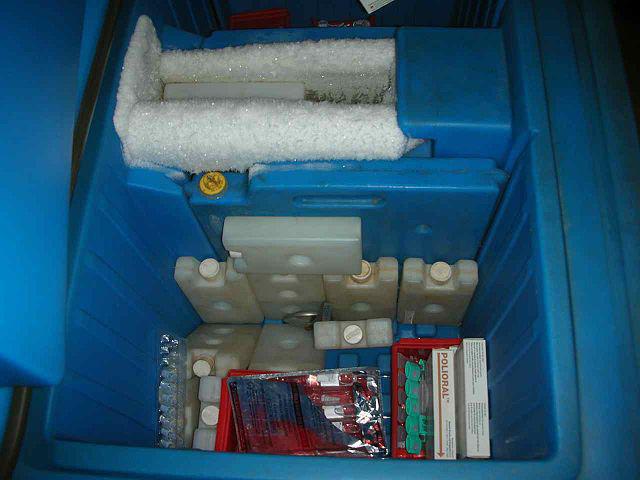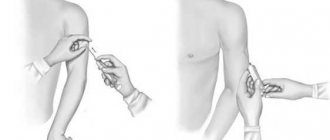Immunobiological medicinal products (IMPs) are medicinal products intended for:
- formation of active or passive immunity
- diagnosis of immunity
- diagnosis of specific acquired changes in the immunological response to allergenic substances.
Simply put, ILPs are vaccines, toxoids, toxins, serums, immunoglobulins and allergens.
Most pharmacies working with ILP are pharmacies at medical institutions that provide vaccination to the population. This is due to the fact that immunization of the population against a number of infections is free for all citizens. The share of commercial pharmacies selling IMPs is small; as a rule, these are large chains that are ready to offer an imported alternative to domestic vaccines; a vaccine not included in the vaccination schedule, or a specific ILP at the buyer’s request. It may be unprofitable for small chains and single pharmacies to engage in ILP, since the share of ILP in the assortment is negligible, the demand is small, and there are a lot of requirements and costs for organizing the work.
Gentle ILP
IMPs occupy a special place in the group of thermolabile drugs (MDs), since they require particularly strict adherence to temperature conditions. All ILPs lose their activity over time, and under unfavorable temperature conditions this happens very quickly. An increase or decrease in temperature leads to a partial or complete loss of vaccine immunogenic activity, which is not restored when it is returned to the recommended temperature regime, i.e. loss of activity is irreversible. Therefore, proper storage and transportation of vaccines is vital to maintain their potency until they are administered to the body. All vaccines lose their potency when stored at elevated temperatures, however, their sensitivity to temperature varies. The most thermosensitive are polio, measles, pertussis (acellular), mumps, DPT, ADS, ADS-M, BCG, and hepatitis B vaccine. Tetanus toxoid (AT) is less sensitive to increased temperature. Vaccines also differ in their sensitivity to low temperatures: some can withstand freezing without loss of activity (BCG, polio, measles, mumps vaccines), others are destroyed by freezing (DTP, ADS, ADS-M, AC, hepatitis B vaccine). The slightest violations when working with them can render the drug unusable and even cause harm to health if used. Failure to comply with the rules and conditions for storing vaccines can lead to the development of post-vaccination complications. These can be both local and systemic reactions of the body.
Cold chain concept
Cold chain is a relatively new term that originally appeared in pharmaceutical logistics. The cold chain refers to the set of equipment, processes and activities that ensure the preservation of pharmaceuticals at low temperatures from the moment of production to the moment of use. The appearance of the term cold chain in pharmaceuticals is not accidental, since it is there that most drugs become unsuitable for use outside the permitted storage temperature range. The term "cold chain" is used for the storage and transportation of pharmaceuticals, and for other perishable goods the term "cold chain" is used, and the content of both terms is almost the same.
The legislative framework
Work with IMP is regulated by a separate document: Sanitary and Epidemiological Rules SP 3.3.2.3332-16 “Conditions for transportation and storage of immunobiological medicinal products.” In the article, we have selected for you from SanPin all the rules relating to ILP. This is the main document, but not the only one. The general rules that are contained in the orders of the Ministry of Health “On approval of the rules for storing medicines” No. 706n, “On approval of the rules of good practice for the storage and transportation of medicines for medical use” No. 646n are also applicable to the storage of medical products. Some of the requirements for the storage of pharmaceutical products are contained in GF XIV in the general pharmacopoeial article “Storage of medicines”.
Supply Chain Trends
The process of automation of temperature logistics and the issue of cold chain control are becoming increasingly relevant, which is caused by such external market factors as:
- growth of the frozen and chilled food market;
- the emergence and explosive growth of the food delivery market;
- regular tightening of legislation in the field of control of retail, transport, production and marketing of food products.
From July 1, 2021, each stage of the life cycle and movement of products of animal origin is recorded in the Federal State Information System (FSIS) “Mercury”. Part of the food control procedures includes temperature control; in essence, this is cold chain compliance monitoring at the state level. The development of preventive measures and the unification of rules are the main tasks of introducing state regulation measures in the food and pharmaceutical industries.
Among the main trends in cold chain automation are the following:
- Increasing complexity of monitoring systems for compliance with storage and transportation standards (time control and temperature control). Transition from the use of simple indicators to digital tools – hardware and software systems.
- Reducing the influence of the human factor, high degree of automation of processes, “roboticization” of personnel actions.
- Real-time temperature control, mobility, predictive algorithms. Online monitoring is coming to the fore, replacing the previously common recording of temperature violations after the fact. In the process of cold chain automation, factors such as mobility and accessibility of information and management tools, such as convenient management using a mobile application or web application, have also become important.
- Actions to prevent cargo damage should begin even before the negative impact on the product begins. For example, with the help of modern digital solutions, warehouse personnel or the dispatcher responsible for transportation automatically receive warnings about the occurrence of sub-threshold temperatures.
“Cold chain” – what is it?
The concept of the cold chain was developed in the early 1980s when WHO was implementing the Expanded Program on Immunization in developing countries with hot climates. “Cold chain” is a set of continuous measures to ensure the quality and safety of medical products along the entire route from the manufacturer to the final consumer (patient). “Cold chain” is the most important condition for handling ILP. If at least one link is unreliable even according to one of the criteria, any other efforts become meaningless. If at least part of the chain is not controlled, there is no control in the entire chain.
The “cold chain” consists of 4 levels, which can be represented in the form of a diagram:
Pharmacies, as we see, are on the third level. The organization and provision of requirements for compliance with the “cold chain” lies with the head of the pharmacy organization. The head of the pharmacy approves by order the persons responsible for the “cold chain”. Specialists of a pharmacy organization involved in the sale of pharmaceutical products undergo annual training on how to work with this group of drugs.
Supply chains – where is the market heading?
Recently, we have seen a shift from an outdated view of supply chains to an innovative one. This implies a transition from local solutions, when each participant in the chain acted in their own interests and cared only about their part in a long supply chain, to a unified management of the entire process in order to increase the competitiveness of the entire chain. The principles of building logistics in the supply chain go beyond the boundaries of a single enterprise and extend to the entire cycle - from the production of raw materials to the sale of finished goods to the final consumer.
Demand requires flexibility from the logistics service. As a rule, the entire supply chain reacts to any changes occurring in the market and more and more intermediate stages of the chain appear:
- distribution centers;
- cross-dock sites;
- transhipment warehouses.
However, the increase in the number of stages of the supply chain, in turn, leads to an increase in the complexity of monitoring this very chain. The solution to the problem is automation of the industry, which is what the market is moving towards now.
At what temperature are ILPs stored in a pharmacy?
ILP should be stored in accordance with the regimen specified in the instructions for use. For most, this is +2°C to +8°C inclusive. It is prohibited to freeze adsorbed preparations containing adjuvants (pertussis-diphtheria-tetanus vaccine, diphtheria-tetanus toxoid, hepatitis B and A vaccines, subunit influenza vaccines, inactivated polio vaccine), as well as vaccine solvents. As you can see, the temperature regime corresponds to a “cold place”, but the requirements for ensuring it for ILP are much stricter than for other thermolabile drugs.
Equipment for storing medical products
At the first, second and third levels of the “cold chain”, refrigerated chambers (rooms) are used for unpacking, storing, packing and preparing IMP for further transportation. As a rule, pharmacies engaged in retail dispensing to the public do not have such cameras. In this case, special “cold chain” refrigerators are used to store ILP, capable of maintaining the temperature for at least 24 hours in the event of a power outage. Such refrigerators have stable temperature conditions and clearly maintain temperatures from +2ºС to +8 ºС. Refrigerators must have reversible doors without shelves, a built-in thermometer with a display for visual temperature control, and an audible temperature alarm.
An acceptable option is when the pharmacy, even before the release of SanPin, used and still uses a pharmaceutical or household refrigerator for storing medical products. Pharmacies replace such equipment with refrigerators for the “cold chain” as planned, or when outdated equipment fails.
In the pharmacy premises where refrigerators for medical products are located, the temperature should be maintained no higher than +20 ºС.
More rules for storing immunobiological drugs
- The pharmacist must load and unload thermal containers (cooler bags) within 10 minutes in the same room.
- Refrigeration equipment should not be filled to more than 2/3 of its volume.
- For uniform cooling, access to cooled air must be provided to each package of ILP in the refrigerator.
- It is not allowed to store other drugs and food products in refrigerators for medical laboratory use.
- It is not allowed to place the ILP on the door panel of the refrigerator (in the case of using domestic refrigerators).
- Inside the refrigerator, non-freezing materials and solvents are located away from the source of cold.
- Shelves for storing ILP must be marked, and the ILP themselves must be identified using rack cards or codes (when maintaining electronic records).
- The duration of storage of IMP at the third level in pharmacies at medical institutions should not exceed three months, but pharmacies engaged in retail sale of IMP can store and sell IMP during the shelf life of the drug, but no later than seven days before its expiration.
- Each refrigerating chamber provides space for placing cold elements (at least 1/6 of the total volume of the refrigerating chamber), which serve as additional sources of cold when the power supply to the refrigerator is turned off.
- In the event of a power outage, at any time of the day it should be possible to switch refrigerators to an autonomous power supply network (we are not aware of any real examples of this requirement being met in private pharmacies).
- General cleaning of refrigerators is carried out at least once a month, routine cleaning is carried out as needed.
- General cleaning of the refrigerator involves disconnecting the power supply, washing and treating internal and external surfaces with disinfectants. It must be carried out in such a way that the IMP storage regime is not violated. In this case, the manager must develop step-by-step instructions for pharmacists.
Thermal container and cold element

This equipment is a box made of special thermal insulating material. It has a tight-fitting lid made of the same material. The sizes of thermal containers can be different. Their inner surface must be covered with a layer that allows sanitary treatment. The required temperature regime inside the container is provided by cold elements. These are hermetically sealed containers that are filled with water or a special solution. It is frozen for 24 hours before being placed in a container. If the cold element defrosts, it must be replaced with another in a special warehouse.
Temperature Control Equipment
In addition to the built-in thermometer, the refrigerator is equipped with two autonomous thermometers and two temperature indicators (and, possibly, two temperature recorders). Autonomous thermometers paired with a temperature indicator (thermal recorder) are placed (1) at the “coldest” point, subject to probable freezing, but not closer than 10 cm to the cold source, and (2) at the “warmest” (farthest from the cold source) points refrigeration equipment.
Thermal indicators are the main means of temperature control, i.e. their presence in the refrigerator for ILP is mandatory. Thermal indicators serve to clearly establish and display the fact and duration of a violation (or absence thereof) of the temperature regime. Each temperature indicator has the ability to visually indicate/alarm about temperature violations. In addition, each temperature indicator has its own identification number, which makes it impossible to falsify its readings.
Temperature recorders are an additional tool. They continuously measure temperature and store temperature data in the device’s memory, which can be downloaded and analyzed. There are temperature indicators with a temperature recording function, which, of course, is very convenient.
Factors influencing the development of cold chains
Due to the growth of the market for frozen and refrigerated products, as well as the increase in the “transport leverage” in the global transport system, the demand for transportation and storage under special temperature conditions is growing.
The growth of consumer markets and globalization in logistics are increasing the requirements for the equipment and information technologies used. The transport distance is lengthening, the logistics chain is becoming more complex, more additional links appear in it - distribution centers, cross-dock sites. During the movement of goods, there is a need to control the stages of its transportation, where a violation of temperature conditions may occur, which leads to a loss of quality of goods that are sensitive to temperature changes.
Monitoring of thermometers and temperature indicators
The official responsible for ensuring the “cold chain” in the pharmacy monitors the readings of each thermometer and temperature indicator twice a day (at the beginning and end of the working day) and records the readings of each autonomous thermometer and temperature indicator indicating its personalized number in a special temperature monitoring log . The log is kept separately for each unit of refrigeration equipment (Appendix No. 2 to these Rules).
As necessary, but at least once a week, or in the event of an emergency, the responsible pharmacist reads information from temperature recorders, creates an electronic copy and prints the data on paper; the information is stored for one year. All temperature measuring instruments must undergo timely verification in accordance with the schedule. Documents confirming the verification are kept by the official responsible for the “cold chain”.
Equipment for transporting medical products
According to the clarification Letter of the Ministry of Health dated September 27, 2017, the release of medical supplies during retail sales is permitted only if the buyer delivers the medical supplies to the clinic in a thermal container or thermos or in “another device” in compliance with the “cold chain” conditions. You can release the ILP into the buyer’s own equipment (thermal container or cooler bag), but often people come without it. Therefore, it is reasonable to always have the required number of cold packs and thermal bags/thermal containers on sale.
Pharmacy organizations selling medical products to the fourth level are responsible for their transportation. For this purpose, thermal containers of different capacities are used. The pharmacy must have a supply of thermal containers, cold elements and thermal indicators (thermal recorders) for transportation. For reusable thermal containers, a double supply of cold elements is required: one is used, the other is frozen.
ILP during emergencies
Regarding ILP, a separate section in SP 3.3.2.3332-16 stipulates that the pharmacy must be prepared for all possible emergency situations (ES) in a given organization, region, or locality. To do this, the manager develops and approves an emergency action plan to ensure a “cold chain” during an emergency. The plan must be clear, specific, indicating the procedure for each official, the necessary telephone numbers, diagrams, calculating the required supply of thermal containers, temperature indicators (temperature recorders), frozen refrigeration elements, etc.
Periodically, but at least once a year, the pharmacy manager conducts exercises in which all specialists are involved and analyzes the performance of all equipment. Based on the results of the exercise, appropriate adjustments are made to the cold chain maintenance plan if necessary.
Other publications about the conditions and rules for storing drugs in pharmacies:
Rules for storing prescriptions in a pharmacy
Storage of thermolabile drugs: refrigerators and thermometers
Storing medications in a pharmacy: temperature and humidity
Temperature and humidity in a pharmacy + sample logbook
You can discuss the latest news with all your Russian colleagues in chats:
- Telegram: https://tglink.ru/pharmorden
- VKontakte: https://vk.me/join/AJQ1d_D2XxaDy9IdzL0e6EqH
To leave a comment on this article, you need to register or log in
Interested in the article? You can find out even more in the section Working in a pharmacy
Interested in the article? You can find out even more in the section Working in a pharmacy






